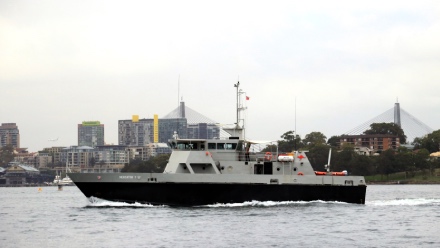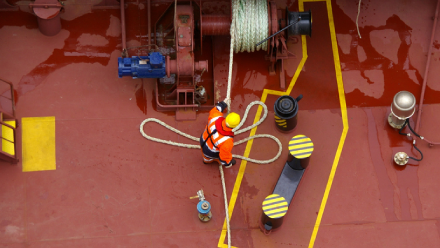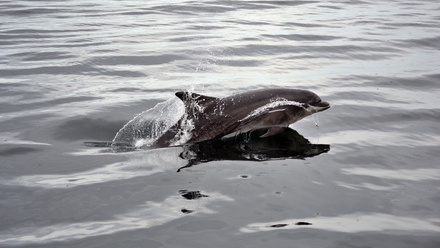Technological boosts for training and recruitment in shipping
Onboarding seafarers is set to become easier, thanks to developments in immersive learning and AI.
“Training is everything in the maritime industry,” says Captain Tim Lodder, CEO of Blue Orange Wave, referring to either starting as a new seafarer, skilling up, switching careers, or keeping abreast of the latest developments.
“[With traditional training] you would go to a centre to do, for instance, a standard safety training course - proficiency in survival craft, boat training, medical first aid training, fire prevention, and survival techniques. Around 60% of the course is theoretical training, so you go into a classroom with 12 or 16 other people and a teacher with a PowerPoint presentation in front of you. The other 40% is practical training.”
Although the practical training invariably needs to be completed in person, “If we use immersive training, you can do the theoretical part on your phone or tablet,” enthuses Lodder.
Creating an immersive, not remote, experience
When Covid-19 saw the closure of schools, colleges, and universities for months, e-learning, delivering classes online with video conferences and other tools, transformed from a tool used by the few to mainstream technology.
“E-learning is just knowledge transfer. Immersive learning is about bridging the gap between knowledge and skills,” says Lodder. Enter Blue Orange Wave’s Edumersive application, an immersive, virtual reality educational solution for the maritime industry.
The immersive training places the user into a virtual 360 video environment, an engine room, for example.
Users can physically see the engine room on their screen. As they move the screen, so too does the view; elements pop up with information, questions, and instructions.
“It’s about creating the foundations for skills to be executed. If you need to overhaul the oil water separator in an engine room, where do you leave all the parts? If you train for this in a classroom, you may not realise just how tight these spaces are, but by training with this immersive 360-degree experience, you’ll experience it, and you’ll know for when you really have to do it,” Lodder explains.
At the end of 2023, Edumersive was given Certification of Type Approval from Nippon Kaiji Kyokai (ClassNK), one of the first maritime products of this type to be certified.
“[Edumersive is] a visionary leap in education. It is marking a new era where certified innovation seamlessly integrates with education,” Captain Naoki Saito, General Manager and Head of Cyber Security at the Innovation Development Division of ClassNK, said in a statement.
Connecting seafarers and employees
Any seafarer looking to join a new employer knows how important it is to showcase their relevant work experience and certificates. Equally, employers need to know the people they are hiring have the skills and certificates required to do the job.
The process can be long for both parties. For the employee, they need to collect and submit all documentation to potential employers individually. On the employer side, credentials have to be carefully checked and verified.
Smoothing this process is the aim of Crewlinker, an AI-based web application that matches seafarer profiles with employer’s search criteria. Soon, the AI will be able to extract key information from photographs of certificates seafarers upload - the type, date of issue, and expiry date, regardless of the language.
“The set-up of the platform is rooted in our wish to make the global maritime labour market much more efficient and our belief that all maritime crew should have an equal chance,” Crewlinker CEO Adam van der Veer announced.
If you would like to join the Artificial Intelligence in the Maritime Domain SIG, you can find out more on the My SIGs page of My IMarEST. Why not join the IMarEST global community online via IMarEST Connect.
Main image: Seafarer using Edumersive technology; credit: Blue Orange Wave






